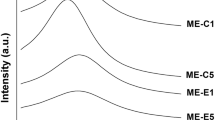Summary
We studied the percutaneous absorption of [14C]-labelled pyridostigmine bromide mixed into various vehicles through normal and appendage-free scar rat skin, in vitro during 72 h.
At the end of the experiment, the percentages of the drug absorbed were higher for nerol 8% in ethanol (respectively 78.4±3.6% and 72.8±4.5% on normal and scar skin) and azone 5% in ethanol-propylene glycol (90∶10) (respectively 76.4±4.4% and 57.2±7.1% on normal and scar skin). Propylene glycol 10% in ethanol inhibits pyridostigmine absorption: 9.9±2.6% and 2.2±1.2% vs 14.7±3.8% and 5.5±5.1% with ethanol on control and scar skin. The transappendageal pathway seems to be less important for nerol (55% to 82% of the absorption routes between 4 h and 32 h) and azone (60% to 79% of the absorption routes until 32 h) than for propylene glycol (63% to 96% of the absorption pathways during the whole experiment), dimethylsulfoxide (about 78% during the first 32 h) and ethanol (more than 50% during most of the time).
These results show that it is possible to increase or decrease the percutaneous absorption, as well as to modulate the relative importance of the transepidermal route and the transfollicular pathway.
Similar content being viewed by others
References
Blank I.H. (1985): The effect of hydration on the permeability of the skin. In: Bronaugh R.L., Maibach H.I. Eds, Percutaneous absorption: mechanism-methodology-drug delivery. New York, Marcel Dekker, pp 97–105.
Cooper E.R. (1985): Vehicle effects on skin penetration. In: Bronaugh R.L., Maibach H.I. Eds, Percutaneous absorption: mechanism-methodology-drug delivery. New York, Marcel Dekker, pp 525–529.
Cooper E.R. (1987): Alterations in skin permeability. In: Chien Y.W. Ed., Transdermal controlled systemic medications. New York, Marcel Dekker, pp 83–91.
Smith K.L. (1990): Penetrant characteristics influencing skin absorption. In: Kemppainen B.W., Reifenrath W.G. Eds, Methods for skin absorption. Boca Raton, CRC Press, pp 23–34.
Scheuplein J. (1972): Properties of the skin as a membrane. In: Montagna W., Van Scott E.J., Stoughton R.B. Eds, Advances in biology of the skin. Pharmacology and the skin, Vol. 12. New York, Meredith Corporation, pp 125–152.
Potts R.O., Bommi Bommannan D., Guy R.H. (1992): Percutaneous absorption. In: Mukhtar H. Ed., Pharmacology of the skin. Boca Raton, CRC Press, pp 13–27.
Hueber F. (1992): Les voies de l’absorption percutanée chez l’animal et chez l’homme: facteurs de modulations. Thèse de Doctorat de l’Université Paris XI.
Illel B., Schaefer H., Wepierre J., Doucet O. (1991): Follicules play an important role in percutaneous absorption. J. Pharm. Sci., 80, 425–427.
Illel B., Schaefer H. (1988): Transfollicular percutaneous absorption. Skin model for quantitative studies. Acta Derm. Venereol., 68, 427–430.
Schaefer H., Watts F., Brod J., Illel B. (1990): Follicular penetration. In: Scott R.C., Guy R.H., Hadgraft J. Eds., Prediction of percutaneous penetration: methods-measurements-modelling. Proceedings of the conference held in April 1989. London, IBC, pp 163–173.
Doucet O. (1990): Etude de l’absorption transépidermique et transfolliculaire. Modulations par les promoteurs d’absorption. Thèse de Doctorat de l’Université Paris XI.
Guy R.H., Mak V.H.W., Kai T., Bommannan D., Potts R.O. (1990): Percutaneous enhancers: mode of action. In: Scott R.C., Guy R.H., Hadgraft J. Eds., Prediction of percutaneous penetration: methods-measurements-modelling. Proceedings of the conference held in April 1989. London, IBC, pp 213–223.
Rolf D. (1988): Chemical and physical methods of enhancing transdermal drug delivery. Pharm. Technol., Sept, 130–140.
Kurihara-Bergstom T., Knutson K., DeNoble L.J., Goates C.Y. (1990): Percutaneous absorption enhancement of ionic molecule by ethanol-water systems in human skin. Pharm. Res., 7, 762–766.
Malkinson F.D., Gehlmann L. (1977): Factors affecting percutaneous absorption. In: Drill V.A., Lazar P. Eds, Cutaneous toxicity. New York, Academic Press, pp 63–81.
Gummer C.L. (1985): Vehicles as penetration enhancers. In: Bronaugh R.L., Maibach H.I. Eds, Percutaneous absorption: mechanism-methodology-drug delivery. New York, Marcel Dekker, pp 561–570.
Mollgaarg B., Hoelgaard A. (1983): Vehicle effect on topical drug delivery II. Concurrent skin transport of drugs and vehicle components. Acta Pharm. Suec., 20, 443–450.
Friberg S.E., Kayali I.H., Margosiak M. (1990): Stratum corneum structure and transport properties. In: Osborne D.W., Amann A.H. Eds, Topical drug delivery formulations. New York, Marcel Dekker, pp 29–45.
Barry B.W. (1987): Mode of action of penetration enhancers in human skin. J. Control. Release, 6, 85–97.
Hori M., Satoh S., Maibach H.I. (1990): Classification of percutaneous penetration enhancers: a conceptional diagram. J. Pharm. Pharmacol., 42, 71–72.
Wiechers J.W., Drenth B.F.H., Jonkman J.H.G., De Zeeuw R.A. (1990): Percutaneous absorption, metabolic profiling, and excretion of the penetration enhancer azone after multiple dosing of an azone-containing triamcinolone acetonide cream in humans. J. Pharm. Sci., 79, 111–115.
Author information
Authors and Affiliations
Rights and permissions
About this article
Cite this article
Bamba, F.L., Wepierre, J. Role of the appendageal pathway in the percutaneous absorption of pyridostigmine bromide in various vehicles. European Journal of Drug Metabolism and Pharmacokinetics 18, 339–348 (1993). https://doi.org/10.1007/BF03190183
Received:
Issue Date:
DOI: https://doi.org/10.1007/BF03190183




